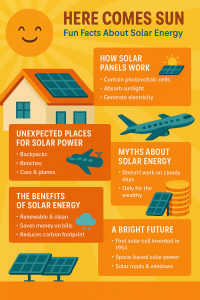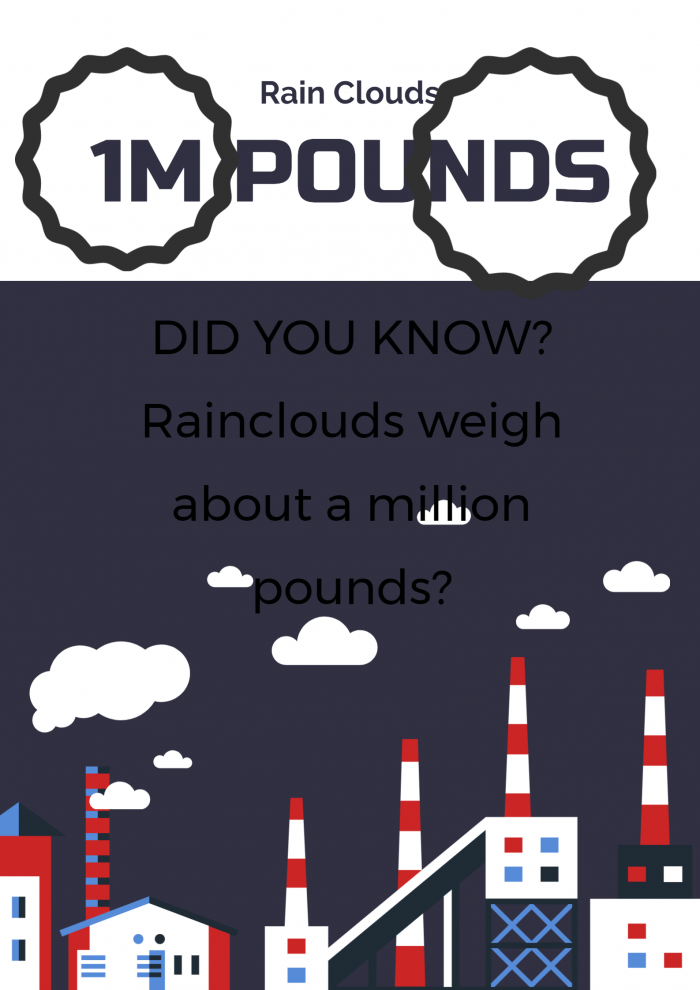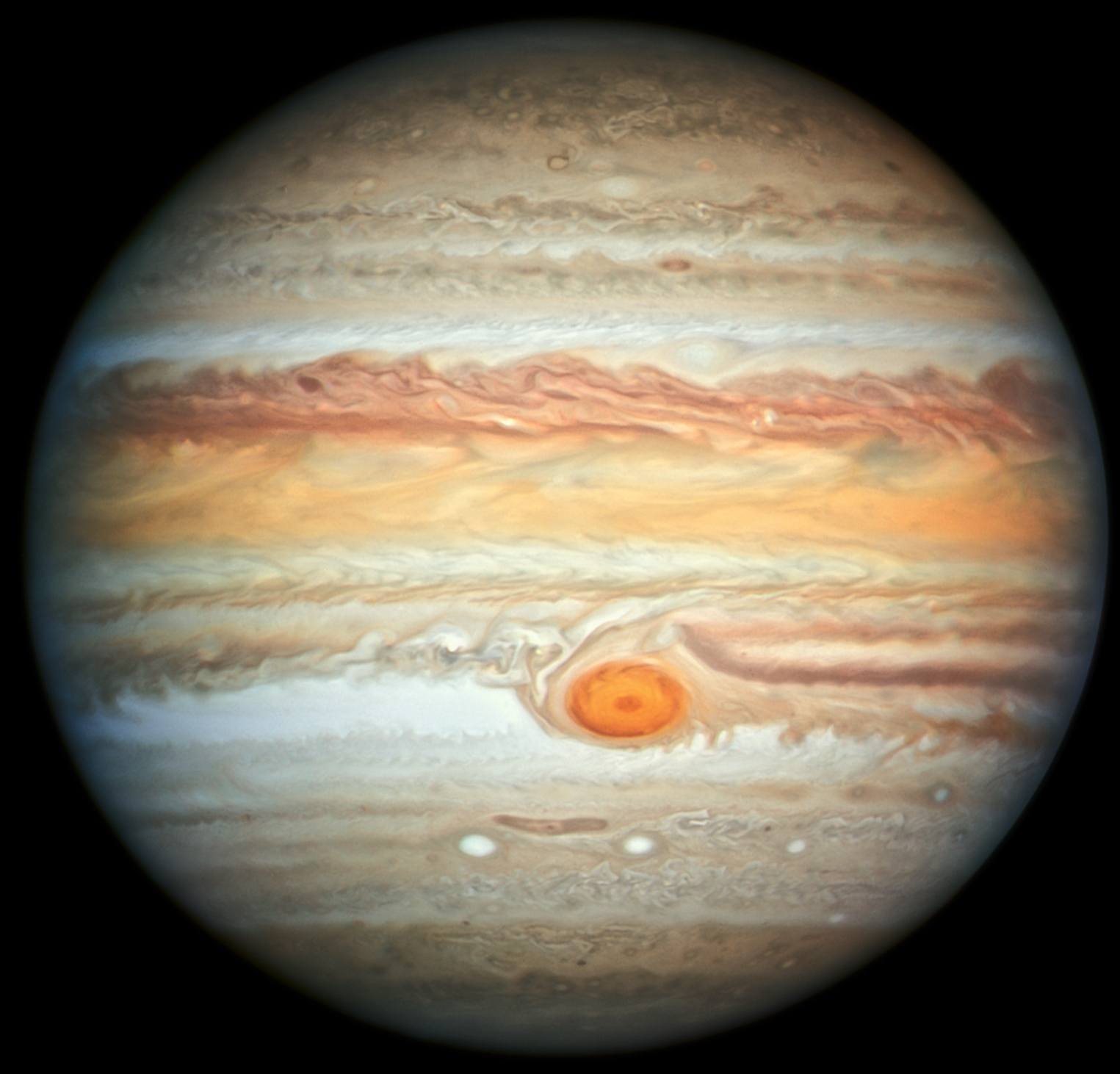Here Comes the Sun: Why Solar Energy Is More Fun Than You Think
 Let’s face it: the sun is kind of a big deal. It’s been lighting up our world for billions of years, it keeps our planet from turning into a giant ice cube, and it’s the reason beach days, sunflowers, and solar panels exist. But while we often think of the sun as just the backdrop to a sunny vacation selfie or the power behind getting a washing line of laundry dried nicely and for free, it’s also the powerhouse behind one of the most exciting (and surprisingly fun) sources of energy today: solar power.
Let’s face it: the sun is kind of a big deal. It’s been lighting up our world for billions of years, it keeps our planet from turning into a giant ice cube, and it’s the reason beach days, sunflowers, and solar panels exist. But while we often think of the sun as just the backdrop to a sunny vacation selfie or the power behind getting a washing line of laundry dried nicely and for free, it’s also the powerhouse behind one of the most exciting (and surprisingly fun) sources of energy today: solar power.
What Is Solar Energy Anyway?
Solar energy is basically power from the sun. It travels 93 million miles to reach us in about eight minutes, and in just one hour, the sunlight that hits Earth could power the entire planet for a year. Yes, a year.
The trick is capturing that energy and putting it to work. That’s where solar panels come in. These clever gadgets use something called photovoltaic (PV) cells—usually made from silicon—to absorb sunlight and turn it into electricity. It’s like magic, except it’s science.
Solar Power Is Like Owning a Mini Power Plant on Your Roof
Installing solar panels on your house isn’t just eco-friendly, it’s a little bit empowering (pun fully intended). You’re essentially turning your roof into a personal power plant. Instead of buying all your electricity from the grid, you start making your own. And if you generate more than you use? In many places, you can sell it back to the grid. That’s right—your house can make money while you sip lemonade in the shade.
Even better, modern solar panels are low-maintenance and long-lasting. Most come with warranties of 20–25 years and just need the occasional cleaning (preferably not by climbing on the roof in flip-flops).
But It’s Not Just for Roofs Anymore
Solar power is popping up in some seriously unexpected places. There are solar-powered backpacks that charge your phone while you hike. Solar benches in parks that let you plug in and chill. Even solar-powered cars and planes are cruising into the future. And there is also a solar train.
One of the coolest inventions? Solar farms—huge stretches of land covered in panels, often in deserts where sunlight is intense and land is cheap. Some of these solar farms use a different kind of tech called concentrated solar power (CSP) that uses mirrors to focus sunlight onto a tower to make steam and drive turbines. It’s like a steampunk dream come true.
And if you’ve ever seen a solar tree (yes, that’s a thing), they’re designed to look like futuristic sculptures while generating power and providing shade. Art and science holding hands.
Solar Energy Is Going Galactic
Speaking of science fiction, did you know scientists are looking into space-based solar power? The idea is to launch solar panels into orbit where the sun always shines, and beam the energy back to Earth using microwaves. It sounds wild, but prototypes are already in development. If they work, Earth could get clean energy 24/7—no clouds, no nighttime, no problem.
A Solar-Powered Slice of History
Believe it or not, solar power isn’t new. In fact, humans have been using the sun’s energy for thousands of years. Ancient Greeks designed buildings to trap sunlight in winter and block it in summer—early solar architects! They had a room called the atrium, where family often gathered to enjoy the light and air circulation. And in the 1800s, people started building solar ovens to cook without firewood.
The first modern solar cell was created in 1954 at Bell Labs. It was only about 6% efficient—today’s best panels can hit over 22%—but it was enough to power a small toy. That’s how it all started: powering a toy. Today? We’re powering cities.
Solar Myths: Busted!
Let’s shine a light (pun intended again) on a few myths:
Myth 1: Solar panels don’t work on cloudy days.
Not true! While they’re most efficient in direct sunlight, panels still generate electricity when it’s overcast. Germany, one of the cloudiest countries in Europe, is a solar leader.
Myth 2: Solar power is only for rich people.
Also not true! Prices have dropped over 80% in the last decade, and many governments offer rebates, tax incentives, and even free installation programs.
Myth 3: You need a house to use solar.
Nope. Apartment dwellers can subscribe to community solar projects or use portable solar chargers for devices. Solar is more flexible than ever.
Solar Saves the Planet (and Your Wallet)
Now let’s get a little serious for a second. Traditional electricity often comes from burning fossil fuels, which can produce smoke and dust.
Solar energy is clean, renewable, and emits zero pollution while it works. Every solar panel installed helps reduce our reliance on polluting fuels and protects our atmosphere. Plus, over time, solar power saves you money. After the initial setup, sunlight is free—forever.
Solar Energy Jobs: The Sunshine Economy
The solar industry is also generating more than just electricity—it’s creating jobs. From engineers and electricians to salespeople and sustainability consultants, there are opportunities in design, installation, research, maintenance, and manufacturing. It’s one of the fastest-growing industries worldwide.
And for those looking to make a career switch into something meaningful? Working in solar energy is like being part of a superhero team—only instead of capes, you wear hard hats and harnesses.
What’s Next? Solar Paint and Solar Roads
The future is getting brighter, literally. Researchers are working on solar paint, which could turn walls into energy-harvesting surfaces. There’s also solar glass, so windows can generate electricity without blocking the view.
And in some places, like France and China, they’ve started experimenting with solar roads—actual streets that absorb sunlight and produce electricity. It’s early days, but if successful, our cities might one day power themselves just by existing.
So, Why Is Solar Energy Fun?
Because it’s full of possibilities. It’s about innovation, independence, creativity, and helping the planet without sacrificing modern convenience. It empowers individuals, inspires inventors, and turns everyday spaces into sources of clean energy.
Whether you’re an eco-warrior, a tech lover, a budget-saver, or just someone who enjoys a good sunrise, solar energy has something to offer. It’s science with sunshine, progress with personality.
So next time you’re outside soaking up some rays, give a little nod to that big fiery ball in the sky. It’s not just lighting your path—it might just be lighting your future.

